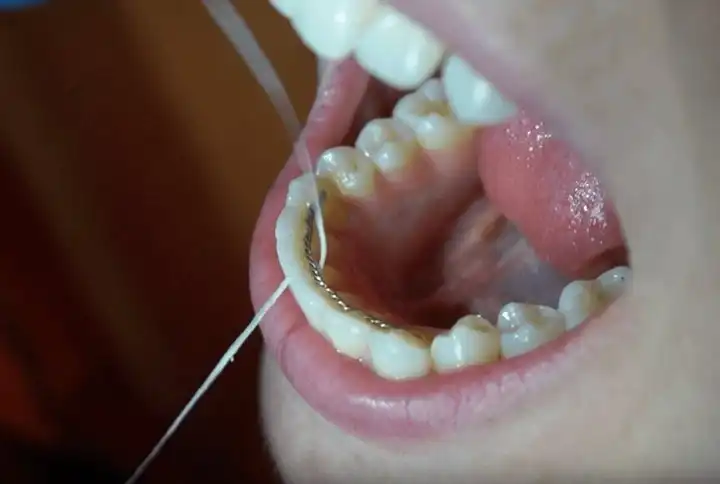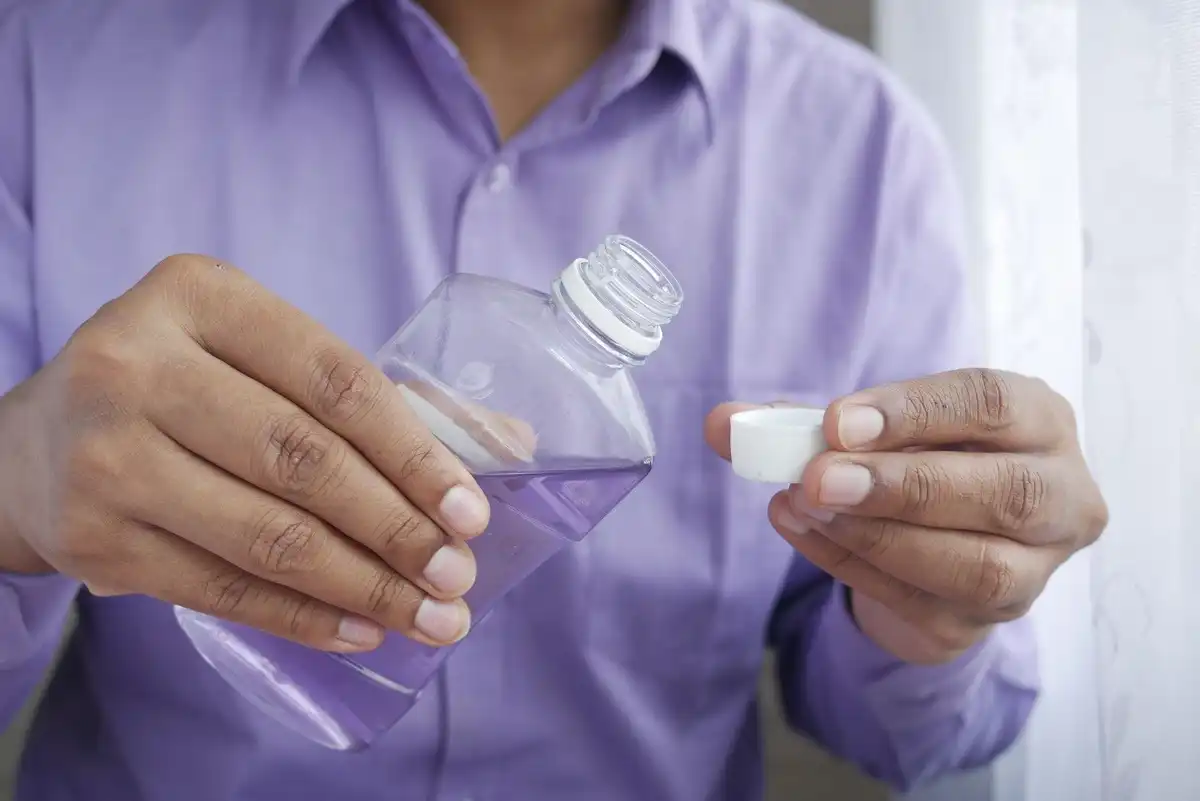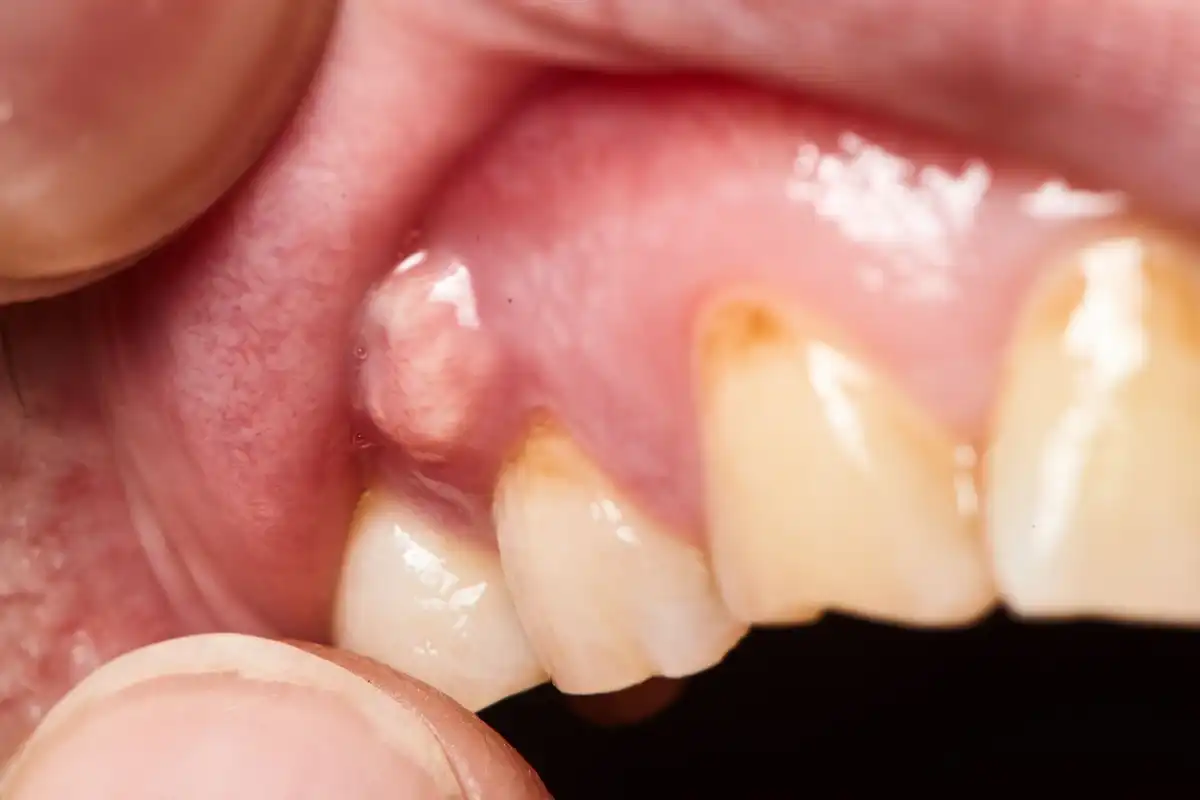9 Reasons Why You Have White Spots On Your Teeth

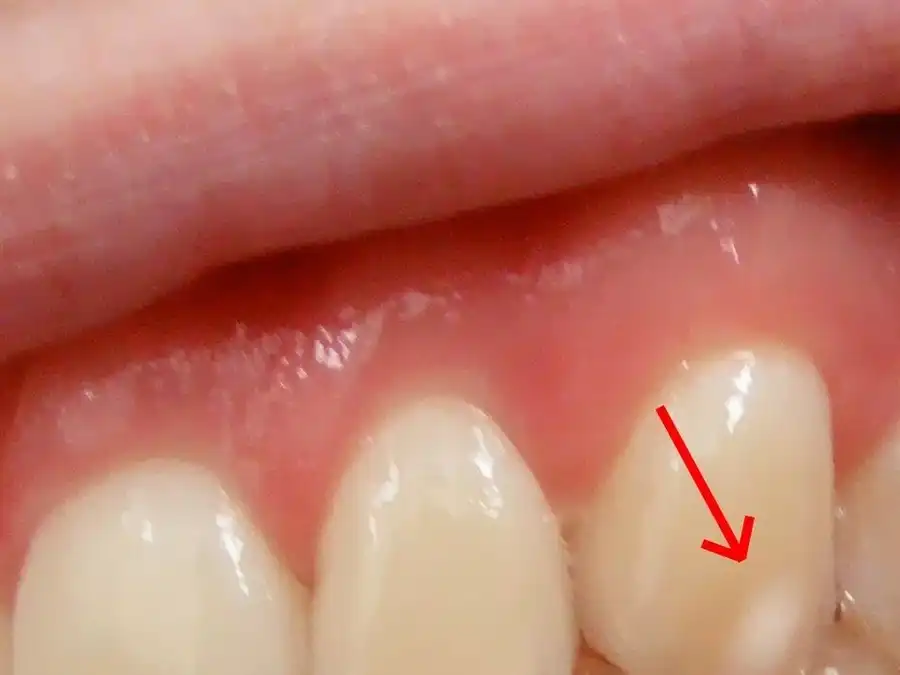
When you think about tooth discoloration and dental staining, what comes to mind? Dark brown, black, or even green stains? Believe it or not, another common cosmetic problem is having teeth with white stains. When there are white spots on teeth, it’s different from other types of discoloration. And in reality, it’s more “serious” than dark stains, as white spots tend to indicate issues like weak enamel or irregularities in tooth development.
Although they’re not necessarily “scary” looking like tooth decay, white spots on teeth are often the earliest stage of cavities.
Common Symptoms
Some white spots are less visible. When your tooth is thoroughly dried off, they become more evident. Your dentist or hygienist may use what’s called an “air/water syringe” to blow small puffs of air on your teeth to check for white spots during your exam.

Common Causes
Generally speaking, you don’t get white spots on teeth the same way you would dark discoloration. Teeth with white stains are exhibiting some type of scarring or compromised structure in that area, making the enamel weaker than what’s around it. As a result, it looks different from the surrounding, healthy tooth structure.
Understanding the causes of white spots on teeth can help you prevent new ones and keep current discoloration from getting worse. There are even steps you can take to possibly reverse the white spot (depending on the situation) with the help of your dental team.
1) Fluorosis
Just as you can have too little of a vitamin or mineral, you can have too much of one too. With fluorosis, an excessive amount of fluoride is ingested during tooth and bone development.
Symptoms
Treatment
Regulate your fluoride intake by drinking tap water that’s monitored for appropriate mineral levels or choose an alternative water supply for drinking. Never leave children unsupervised with products like toothpaste or mouthwash until they’re old enough to spit and rinse well on their own.
2) Demineralization
Demineralization is the first stage of tooth decay. It occurs when the outer layer of enamel begins to deteriorate and loses minerals, making it weaker and compromising its integrity.
Symptoms
Treatment
Start a fluoride regimen ASAP. Believe it or not, you can reverse tooth decay while it’s still at this stage. Although the white spot may not actually go away, you can prevent the lesion from turning into a full-blown cavity.
3) Your Diet
You are what you eat, right? If your diet includes higher acids, processed carbs, or artificial sweeteners, you’ll see a higher level of plaque and enamel erosion in your mouth. Daily oral hygiene is essential. If you’re eating foods that tend to stick around your teeth for a long time (like fruit snacks or caramel) those areas will be more prone to getting white spots first.
Symptoms
Processed, packaged foods make up a large portion of your diet. Snacking on it frequently throughout the day instead of eating at set times can also lengthen the amount of time that those food particles have on your teeth.
Treatment
Opt for whole grains, fresh fruits and vegetables, tap water (it’s fluoridated) and eat at set times throughout the day. If you need a snack, go brush after you eat it!
4) Dry Mouth
Xerostomia (dry mouth) is a lack of adequate saliva flow to lubricate the inside of your mouth. For some people, it’s a chronic problem. Others only experience it now and then. But when you don’t have enough saliva, it allows plaque bacteria and acids to work in overdrive. As a result, you’re at a significantly higher risk of tooth demineralization (aka white spots on teeth.)
Symptoms
Treatment
First, try to pinpoint the cause of your dry mouth. If it’s because of medication, ask your doctor about other alternatives to try. Alcohol intake before bed? Cut back. Cancer therapy? Add a saliva substitute or moisturizing mouthwash into your daily oral hygiene routine. And of course, sip on water often throughout the day! If you’re tempted to suck on a mint, make sure that it’s sugar-free. Chewing a piece of gum that’s made with Xylitol is even better!
5) Medications
Certain types of medications can affect the way your teeth look, especially if they’re taken while the tooth is still developing. Usually this would be in early childhood or when a mother is pregnant and/or breastfeeding. We know that medications like tetracycline can cause severe internal stains that are bluish in color. On the other hand, inhaled drugs such as albuterol can increase the risk for tooth decay. And since white spots are one of the earliest stages of cavities, asthmatics should be aware of the risks.
Symptoms
If medications affect the way your tooth looks, it usually won’t be evident until the tooth develops and erupts through the gums. At that point, surface flaws tend to be visible. On the other hand, medications that are inhaled or liquids that are swallowed may add to demineralization, gradually leading to white spots on teeth.
Treatment
Always discuss medications with your doctor. If you’re pregnant or suspect that you could be pregnant, make sure you tell your medical provider before starting a new prescription. As for adults and children who use inhalers or liquid medications, rinse your mouth thoroughly after each dose. It’s also helpful to supplement with a daily fluoride rinse before you go to bed.
6) Enamel Hypoplasia
Symptoms
With hypoplasia you don’t just see white spots; there are also pits in the surface of the enamel as well as possible yellow or brown areas. Sensitivity is also a concern. The enamel isn’t glossy and smooth like what you would see in a healthy tooth. This type of dental defect is evident as soon as the tooth erupts.
Treatment
7) Braces
Orthodontic appliances like brackets and wires are a huge risk factor for white spots. If your oral hygiene isn’t up to par or you don’t clean around all of your braces thoroughly each day, a thin layer of plaque will adhere to them and start to eat away at the tooth in those areas. That’s why “white circles” may be prevalent once the braces are taken off at the end of your orthodontic therapy.
Symptoms
White spots during braces are easier to spot after the appliances actually come off. Looking at the teeth, you’ll be able to see where the brackets were once bonded in place, because a white circle or partial circle will be scarred into the enamel next to it.
Treatment
Parents should help their children make sure they’re cleaning well around their braces. Supplementing with a professional-grade fluoride gel or rinse is also extremely beneficial. Making it easier to clean around your braces can help, so consider investing in an electric toothbrush, water flosser, and/or angled proxy brush to clean between brackets. Even if your child wants to brush on their own, try to go back behind them every now and then to make sure there’s no plaque buildup. Ask your dentist or orthodontist for a few disclosing tablets to identify which areas aren’t getting cleaned as well.
8) Plaque Accumulation
Symptoms
Since heavy plaque causes white spots, you may not catch the discoloration if you’re not brushing and flossing well. But a thorough brushing and flossing session should remove almost all of the biofilm so that you can see your entire tooth surface. Pay specific attention to areas along the gums, where teeth touch, and around orthodontic appliances. These are the areas where plaque tends to be heaviest and thus, are more prone to white spots.
Treatment
Brush, brush, brush. Use an electric toothbrush if you can because it will help you be more efficient when it comes to plaque removal. The key is to remove all of the plaque at least once a day, minimum. Twice is better. Brush for at least two minutes at a time.
9) Sleeping With Your Mouth Open
Some people claim to see white spots on their teeth when they first wake up in the morning. Since they’re more obvious when your teeth are dry, it’s more common to see them if you’ve been sleeping with your mouth open all night long. Some people are mouth breathers because they snore, have sinus problems, or suffer from sleep apnea.
Symptoms
How can you tell if you’re sleeping with your mouth open? Typically, you’ll wake up with what’s called “cotton mouth”, where your mouth feels dry and sticky. You might even have a sore throat. And of course, if you look at your teeth in the mirror first thing, you’ll see white spots on those areas where your enamel is weak.
Treatment
Dry mouth can raise your risk of cavities and halitosis. So naturally, most people want to do something about it even if white spots in their enamel doesn’t bother them. If you have some type of an airway blockage or sinus infection, work with your doctor to determine the best course of treatment. Using a lubricating mouthwash before bed (and avoiding alcohol) can reduce oral dryness.
Preventing White Spots On Your Teeth
It’s easier to prevent white spots on teeth than it is to treat discoloration that’s already there. You’ve heard the old saying, “An ounce of prevention is worth a pound of cure.” Not surprisingly, most of the best ways to prevent white stains relate back to your everyday diet and oral hygiene routine (yes, we’re talking about brushing and flossing.) They’re especially important if you’re in braces or live in an area with irregular fluoride levels in the water.
- Without further ado, here are some proven strategies to lower your risk of having teeth with white stains.
- brush thoroughly at least twice a day
- clean around each tooth with floss once per day
- invest in a water flosser or proxy-brush to clean around braces
- supplement with fluoride before bedtime
- monitor fluoride intake in children
- if you’re on well water, have it tested
- ask your dentist if fluoride supplements are needed
- choose an alternate water source for drinking/cooking
- reduce your plaque and acid exposures in your diet
When To See A Dentist
There’s a difference between white spots that have been on your teeth since childhood and those that are newly developed. If you’re starting to notice white spots where there used to not be any – specifically between your dental checkups – be sure to bring the subject up with your dentist. More often than not, it doesn’t require a same-day emergency appointment.
Make note of any risk factors like common causes of white spots or changes in your oral hygiene routine, then be sure to discuss them with your dentist. Doing a bit of the detective work beforehand can help your dentist properly identify what’s going on and plan the best course of treatment.
Related: Grab the whitening strips I’m using right now!
Overcoming White Stains On Teeth
Teeth with white stains usually have discoloration because of weak enamel, early stages of tooth decay, poor oral hygiene, trauma, or mineral levels in water/diet as your tooth was developing. Understanding what causes white spots on teeth can help you to prevent them from forming or getting worse. They can cause both structural and cosmetic concerns, depending on why they’re there. Make sure to see your dentist for a checkup at least every six months to stay on top of your oral health needs!
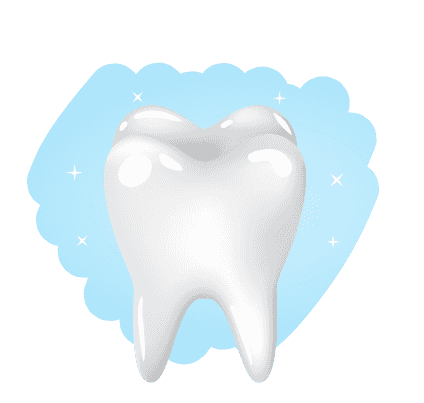
Make your inbox smile!
Subscribe


